Artist Judith Hopf creates an upcycled tropical jungle at Marni S/S 2020
The Italian house's sustainably-minded set design speaks of promise, of things discarded, reused and transformed
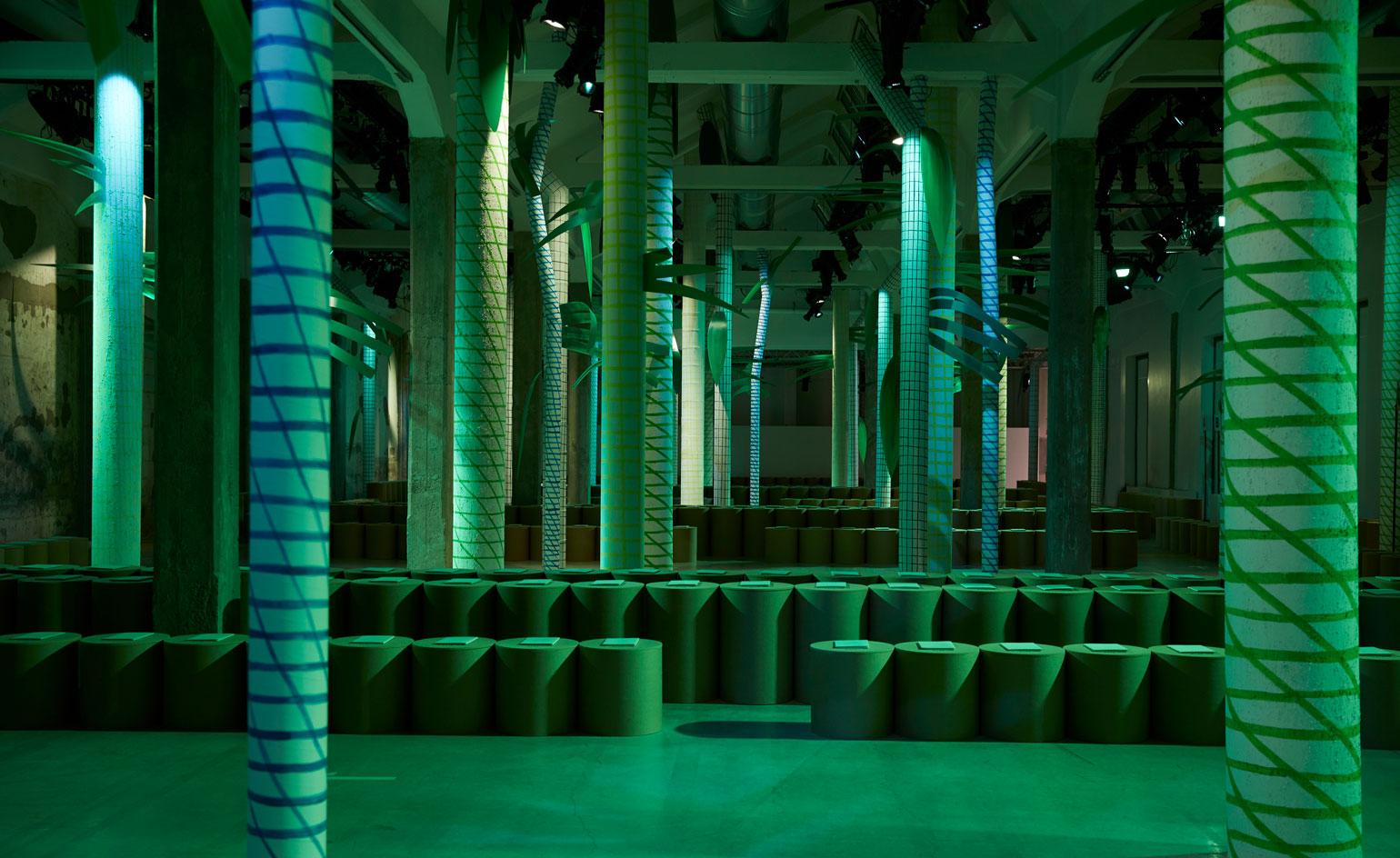
Today, millions of people around the world have marched from school and the workplace to protest against today’s climate change crisis. The environment is a pressing issue in fashion – claimed to be the world’s second most polluting industry – and for S/S 2020, designers have demonstrated their awareness for change. In London, Phoebe English’s presentation was shown against a corkboard backdrop, pinned with sustainable fabric swatches and details on eco manufacturers and processes. In Milan on Wednesday, Arthur Arbesser presented patchwork suits and dresses made with swatches from his own archive.
Across news coverage today, images of children hopefully carrying placards feature, emblazoned with naive and idealised images of nature, like felt tip plants and animals. They bear parallels to the set design of Marni’s S/S 2020 show today, which featured a jungle of childlike trees growing within a vast industrial space, with hand-painted bark and jutting comic-like leaves made from recycled plastic, designed in collaboration with the Berlin artist Judith Hopf.As brands become more sustainability-minded, we begin to question the role of the ornately constructed and overblown runway set. After such spectacles in recent seasons, press releases have worked to ensure journalists that set design soil has been donated, or trees have been replanted in an environmentally friendly fashion. It’s a concept Marni creative director Francesco Risso has had on his mind for S/S 2020. His men’s show venue resembled an eerie underwater scene, with guests looking up through the surface of the ocean into a waste-clogged world, awash with plastic water bottles and milk cartons. His tropical S/S 2020 women’s set reused already-upcycled elements from his men’s show venue, along with cardboard and environmentally-friendly paints.
‘This is our joyous protest. I’m striking in my own way,’ Risso explained backstage after Marni’s S/S 2020 show, barefoot with tribal paint streaks on his cheeks. ‘The collection marks a new beginning for us’. The set spoke of promise, of things discarded, reused and transformed. ‘It was so beautiful watching old bottles become beautiful leaves,’ Risso added. At first glance, it also had an oddly uneasy note, a hint of a future natural world with synthetic elements. ‘The set is about how we think about those things we have already around us,’ Hopf explains. ‘There is no utopia or dystopia behind this concept – it follows the conceptions of diversity and difference in imagination.’
‘This is our joyous protest. I’m striking in my own way’ – Francesco Risso
As brands become more sustainability-minded, we begin to question the role of the ornately constructed and overblown runway set. After such spectacles in recent seasons, press releases have worked to ensure journalists that set design soil has been donated, or trees have been replanted in an environmentally friendly fashion. It’s a concept Marni creative director Francesco Risso has had on his mind for S/S 2020. His men’s show venue resembled an eerie underwater scene, with guests looking up through the surface of the ocean into a waste-clogged world, awash with plastic water bottles and milk cartons. His tropical S/S 2020 women’s set reused already-upcycled elements from his men’s show venue, along with cardboard and environmentally-friendly paints.
‘This is our joyous protest. I’m striking in my own way,’ Risso explained backstage after Marni’s S/S 2020 show, barefoot with tribal paint streaks on his cheeks. ‘The collection marks a new beginning for us’. The set spoke of promise, of things discarded, reused and transformed. ‘It was so beautiful watching old bottles become beautiful leaves,’ Risso added. At first glance, it also had an oddly uneasy note, a hint of a future natural world with synthetic elements. ‘The set is about how we think about those things we have already around us,’ Hopf explains. ‘There is no utopia or dystopia behind this concept – it follows the conceptions of diversity and difference in imagination.’
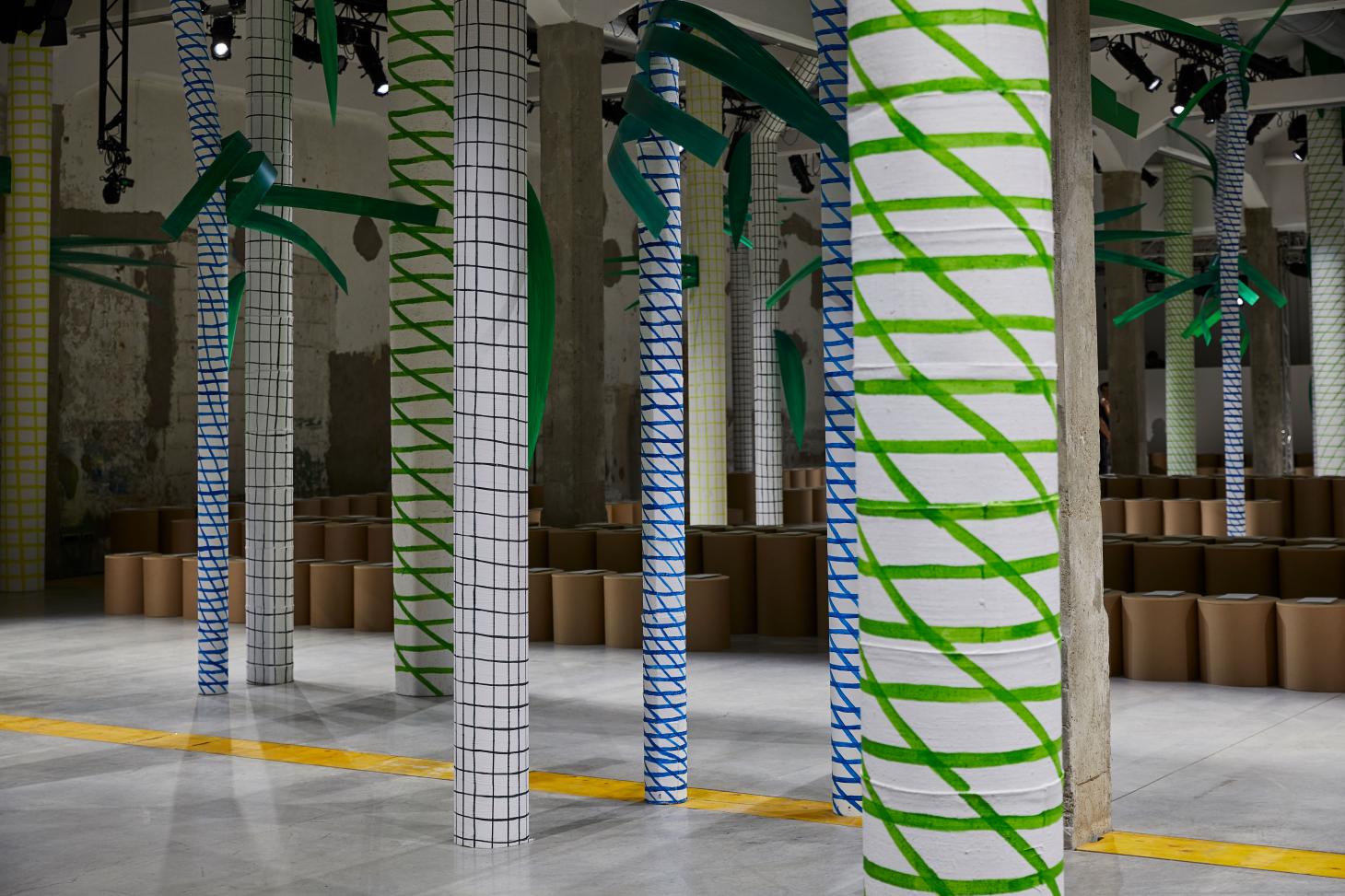
In her inspirations, Hopf nods to Jean Dubuffet and David Hockney and the ‘Fauvist artistic patterns used by Risso and his team’. For spring, the creative director looked to freeing draped shapes, in cotton and taffeta, infused with 1950s couture shapes, like gently poufing skirts, asymmetric dresses with ribbon tied backs and sarong skirts. ‘The women became plant bulbs or pieces of coral,’ Risso explains, of the pieces which were made from upcycled archive materials and hand painted with exotic brushstroke florals. ‘They’re like tree huggers!’
‘We worked with Judith and in the studio with multiple hands, like elves and creatures,’ Risso added. The image of people working together to find creative solutions is particularly prescient today, when millions of people have put their hands in the air, in the hope of change.
Receive our daily digest of inspiration, escapism and design stories from around the world direct to your inbox.
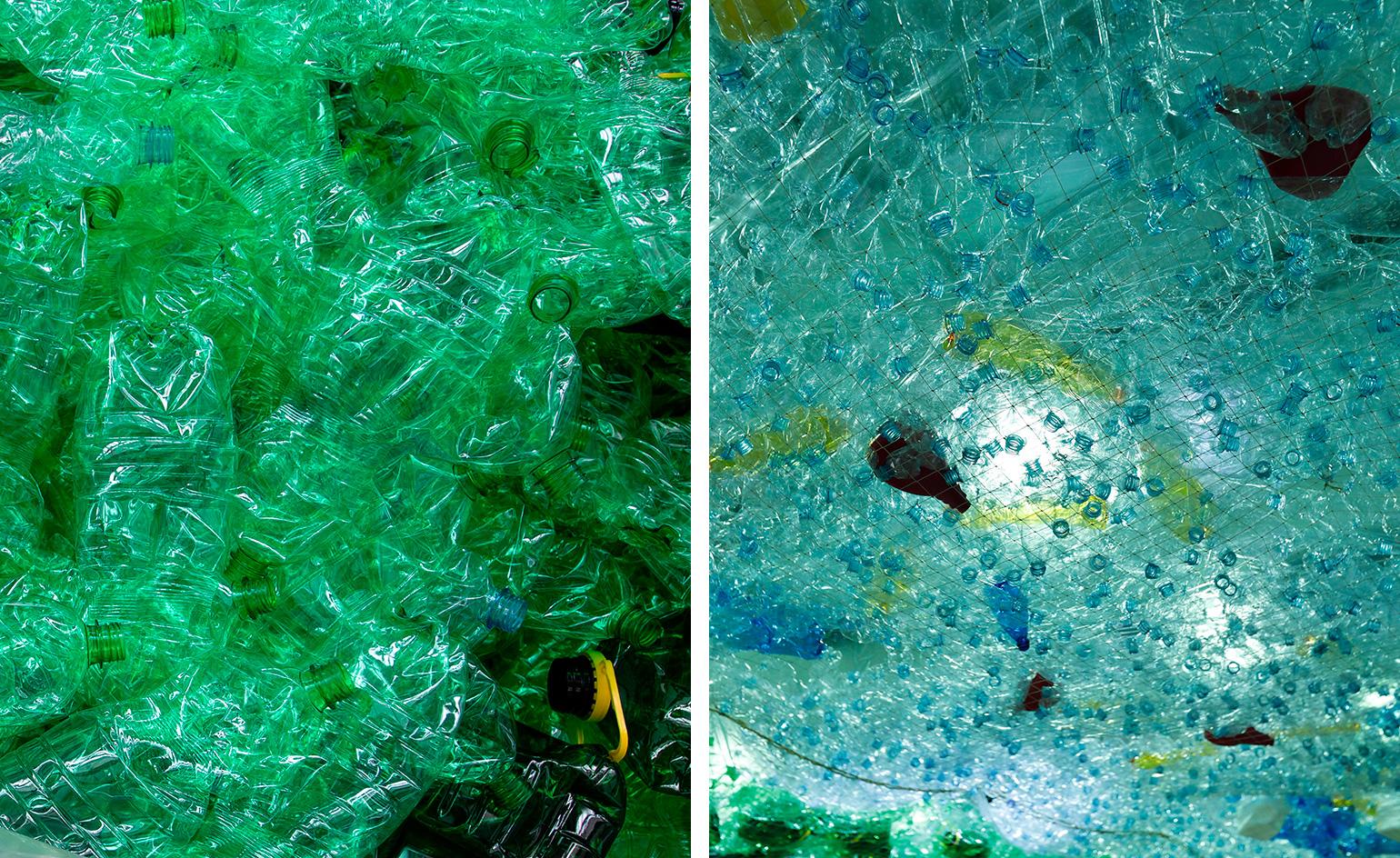
‘Act 1’ – the oceanic recycled plastic bottle show set of Marni’s S/S 2020 men’s show
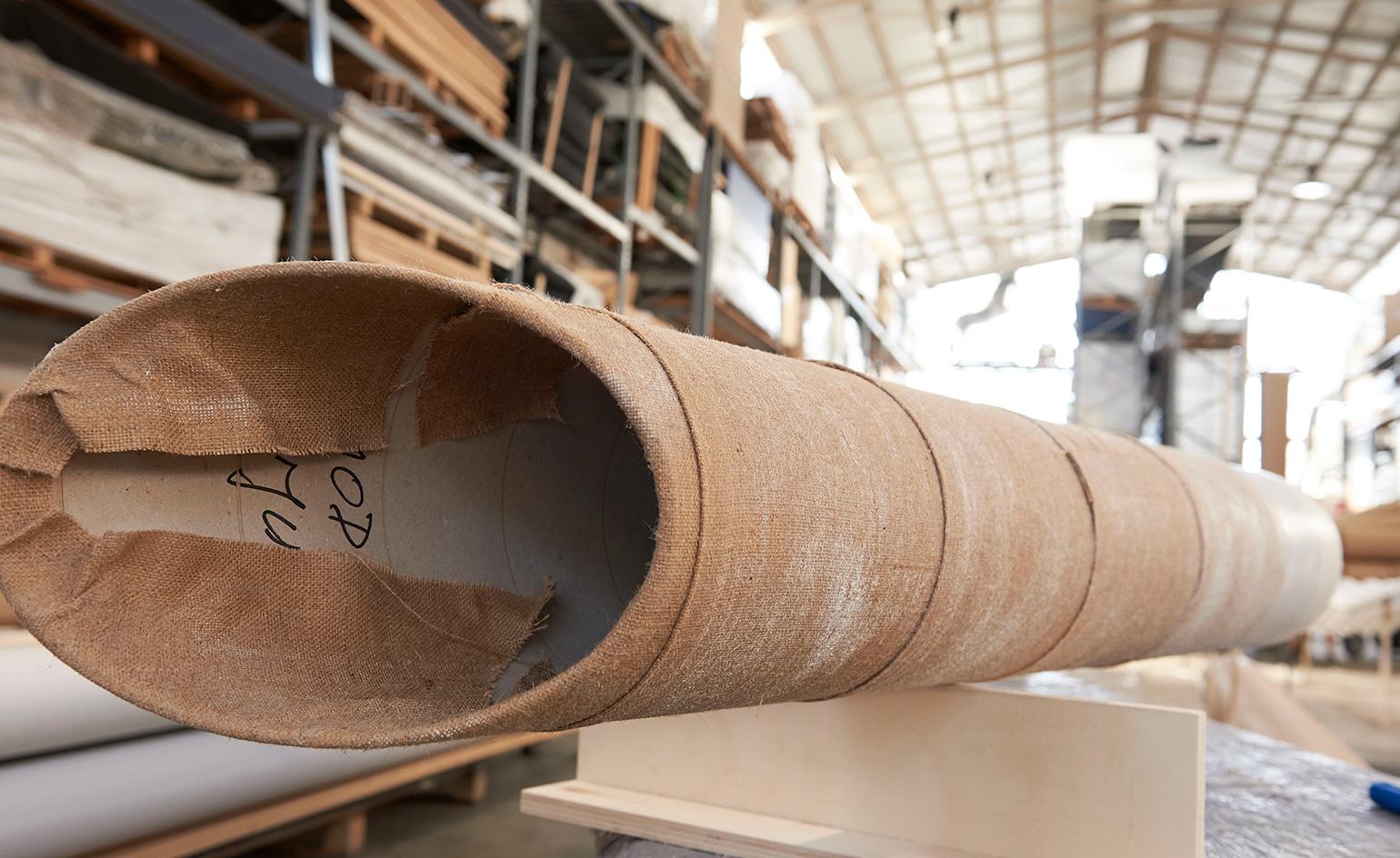
The making process behind ‘Act 2’, artist Judith Hopf’s palm tree-lined show set for Marni’s S/S 2020 women’s show
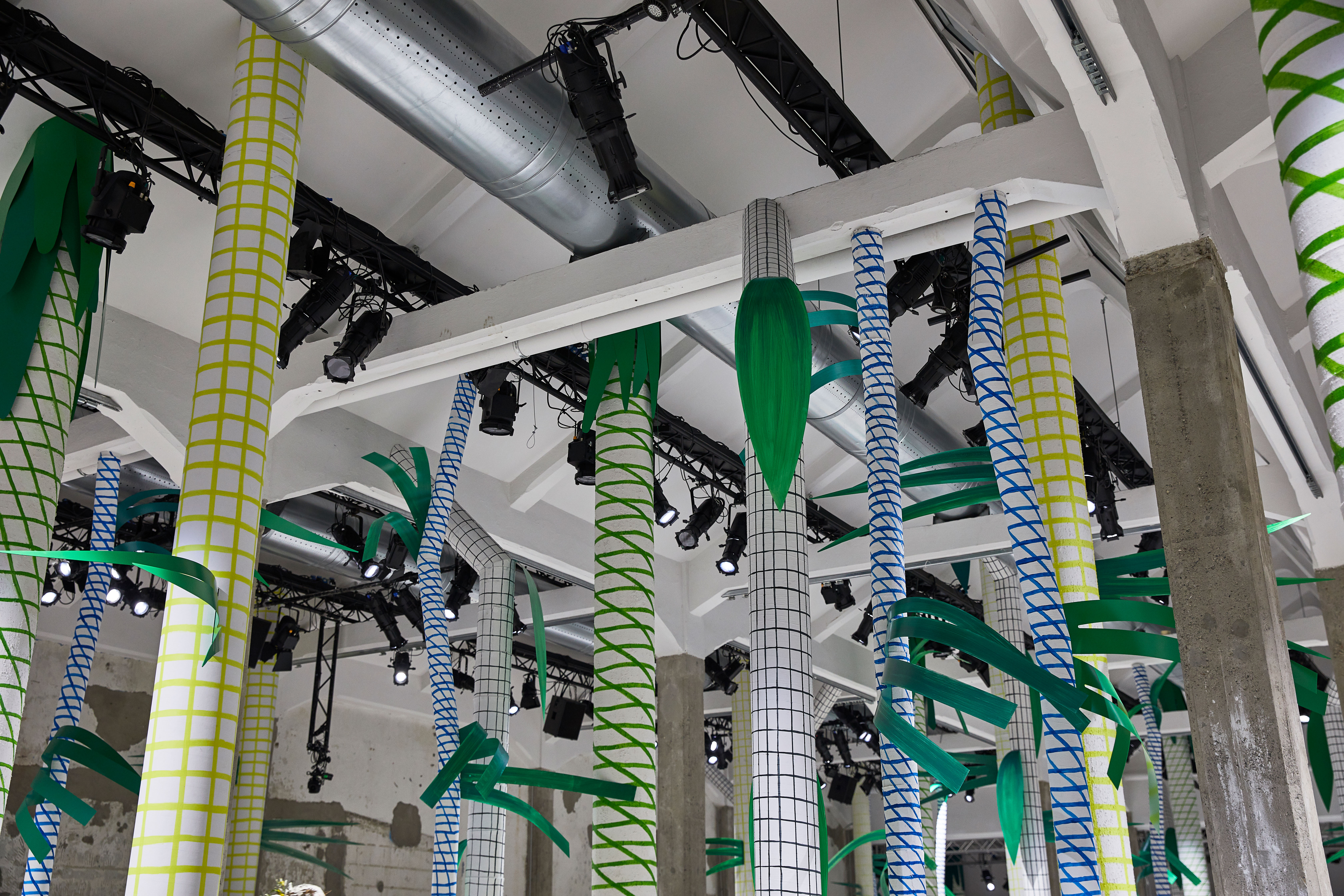
Marni show set S/S 2020 designed by artist Judith Hopf
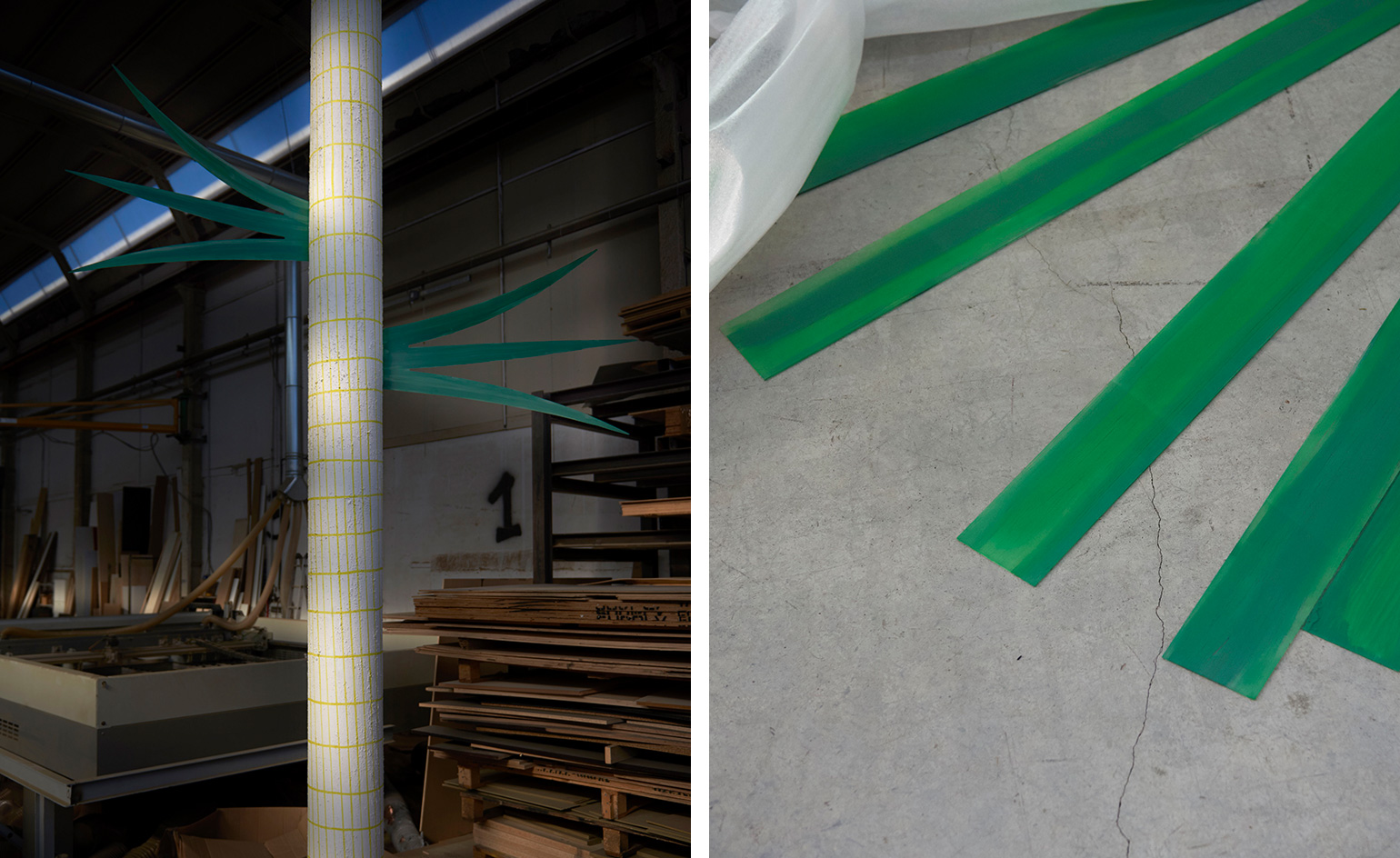
Artificial palm tree leaves derive from PET polymers, obtained from the plastic waste used in Marni’s S/S 2020 men’s show
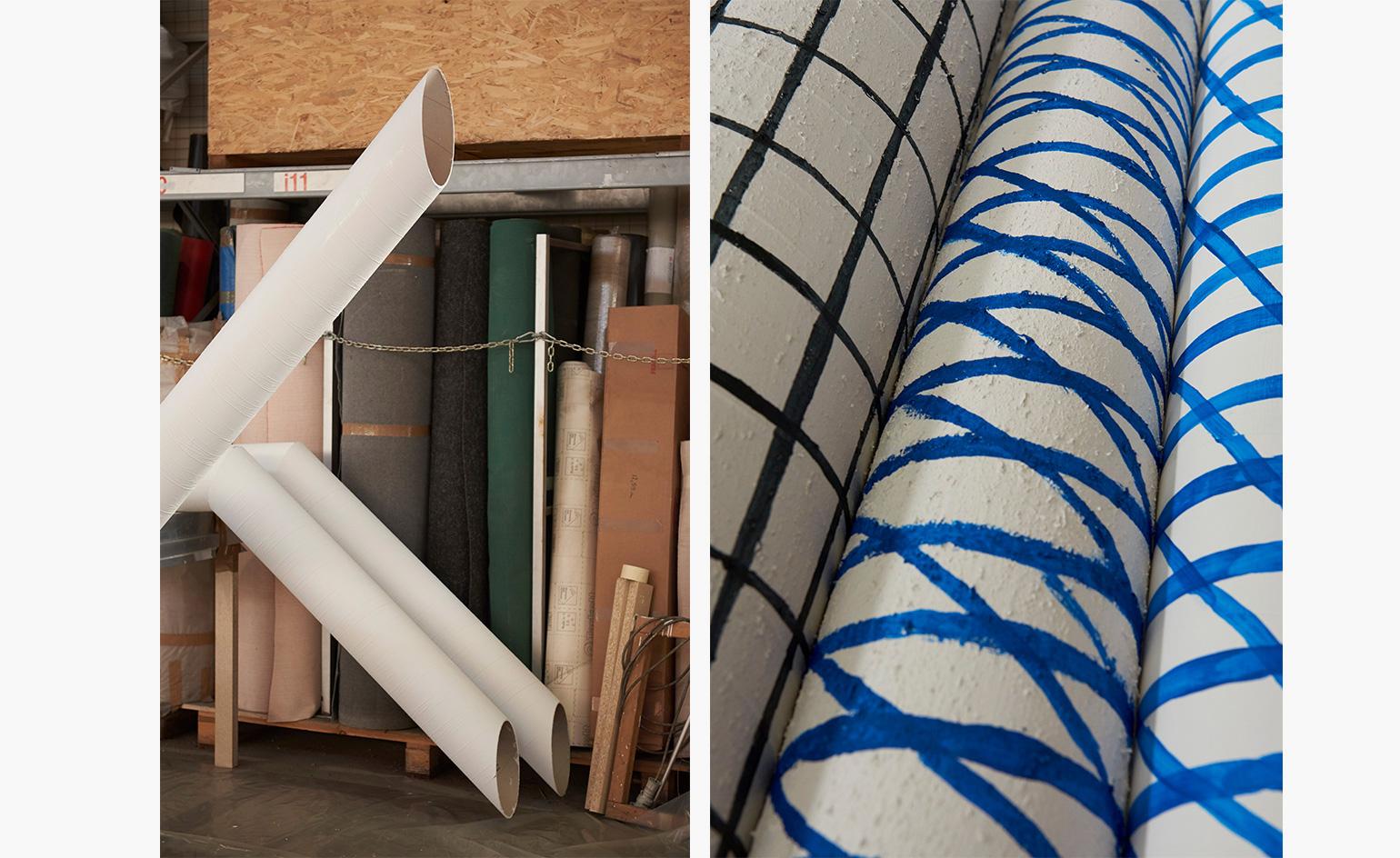
The bark of trees was hand painted with naive grid-like patterns
INFORMATION
-
 The most comprehensive showing of Nan Goldin’s photographs and films is intense and emotional
The most comprehensive showing of Nan Goldin’s photographs and films is intense and emotionalNan Goldin's moving-image work makes a heavy impact in ‘This Will Not End Well’ at Milan’s Pirelli HangarBicocca
-
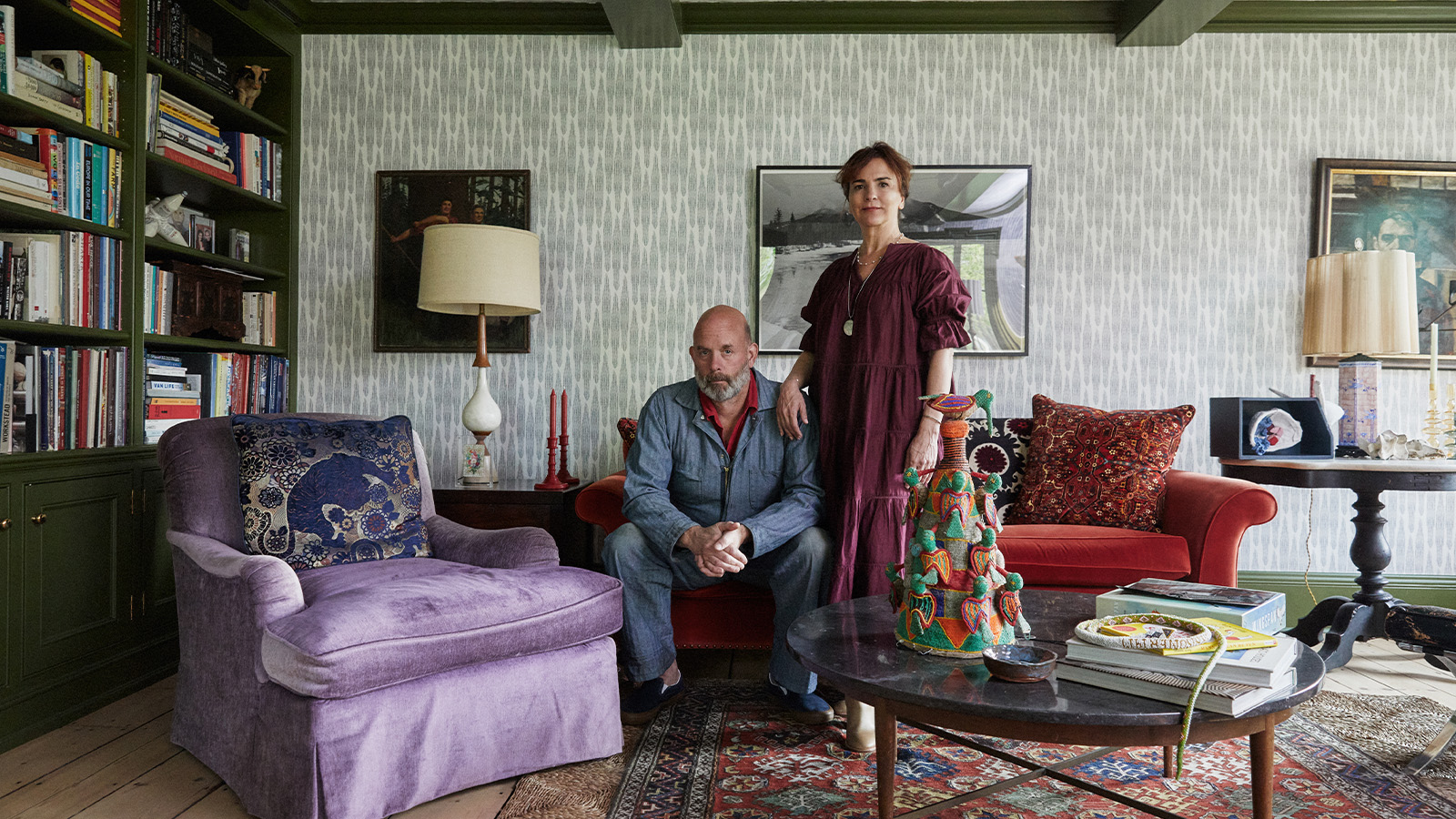 How We Host: Interior designer Heide Hendricks shows us how to throw the ultimate farmhouse fête
How We Host: Interior designer Heide Hendricks shows us how to throw the ultimate farmhouse fêteThe designer, one half of the American design firm Hendricks Churchill, delves into the art of entertaining – from pasta to playlists
-
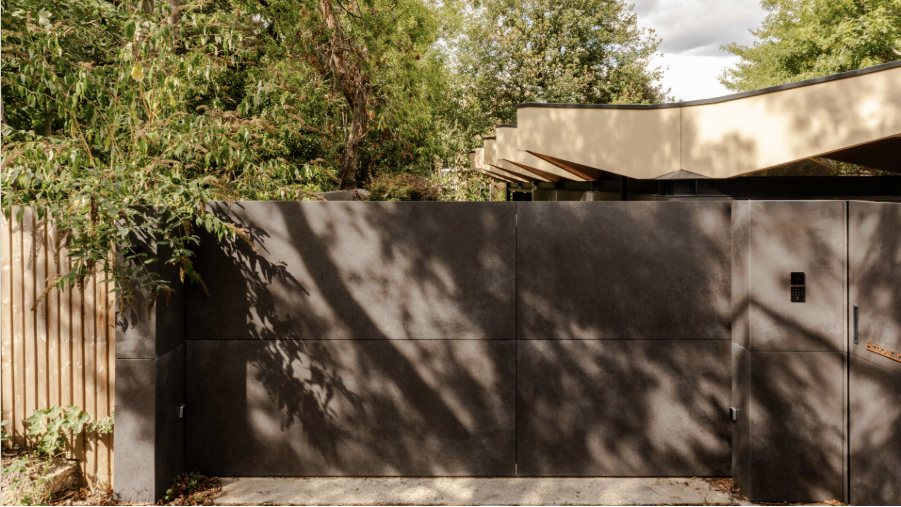 Arbour House is a north London home that lies low but punches high
Arbour House is a north London home that lies low but punches highArbour House by Andrei Saltykov is a low-lying Crouch End home with a striking roof structure that sets it apart
-
 For A/W 2024, the working uniform gets a futuristic spin
For A/W 2024, the working uniform gets a futuristic spinSculpted silhouettes, unexpected textures and plays on classic outerwear meet in the A/W 2024 collections, providing a twisted new take on city dressing
-
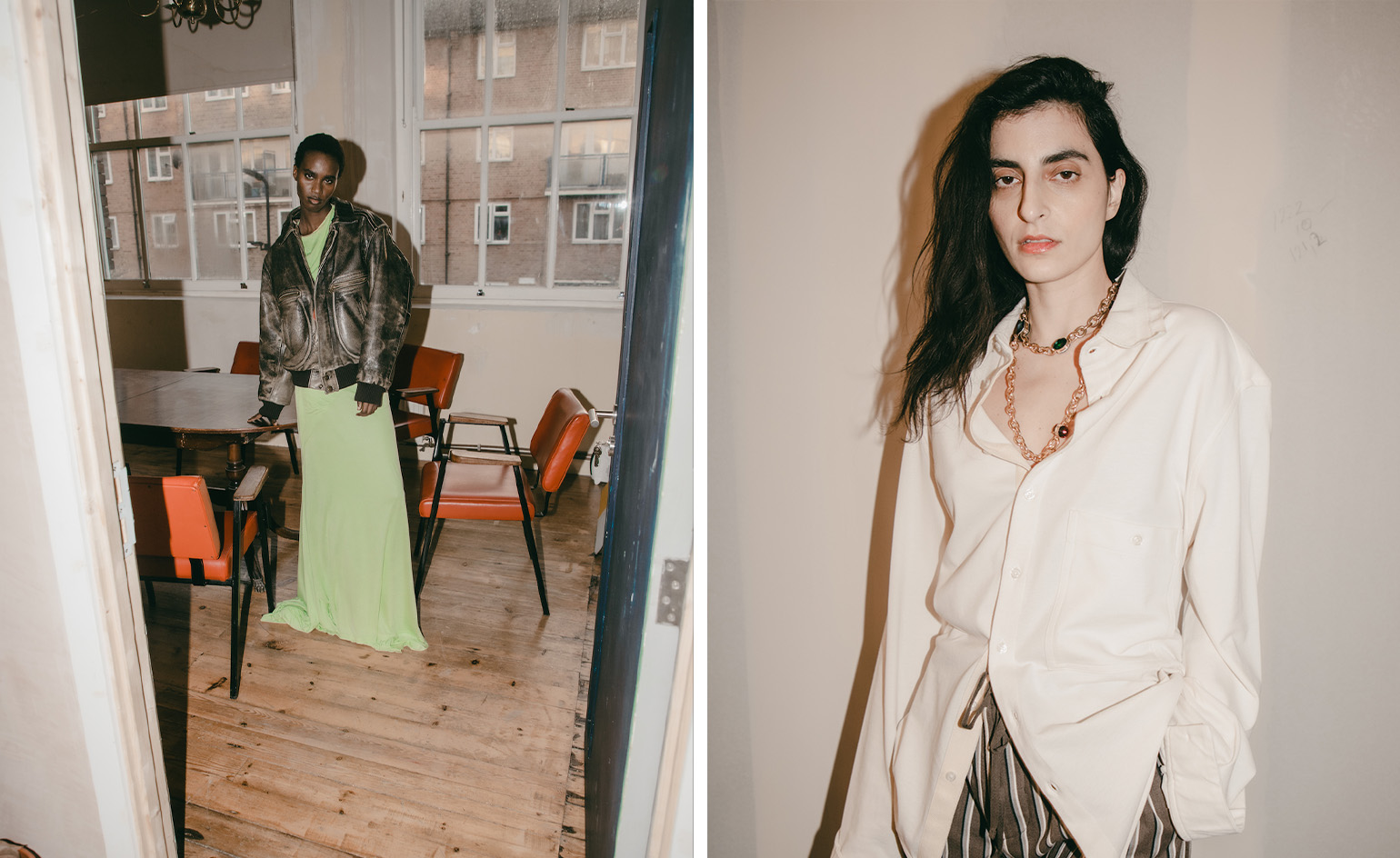 Cult 1960s boutique Granny Takes A Trip gets a sustainable reboot
Cult 1960s boutique Granny Takes A Trip gets a sustainable rebootFounded on King’s Road in 1966, ‘radically creative’ fashion store Granny Takes A Trip is being reimagined for a new generation. Dal Chodha takes a closer look
-
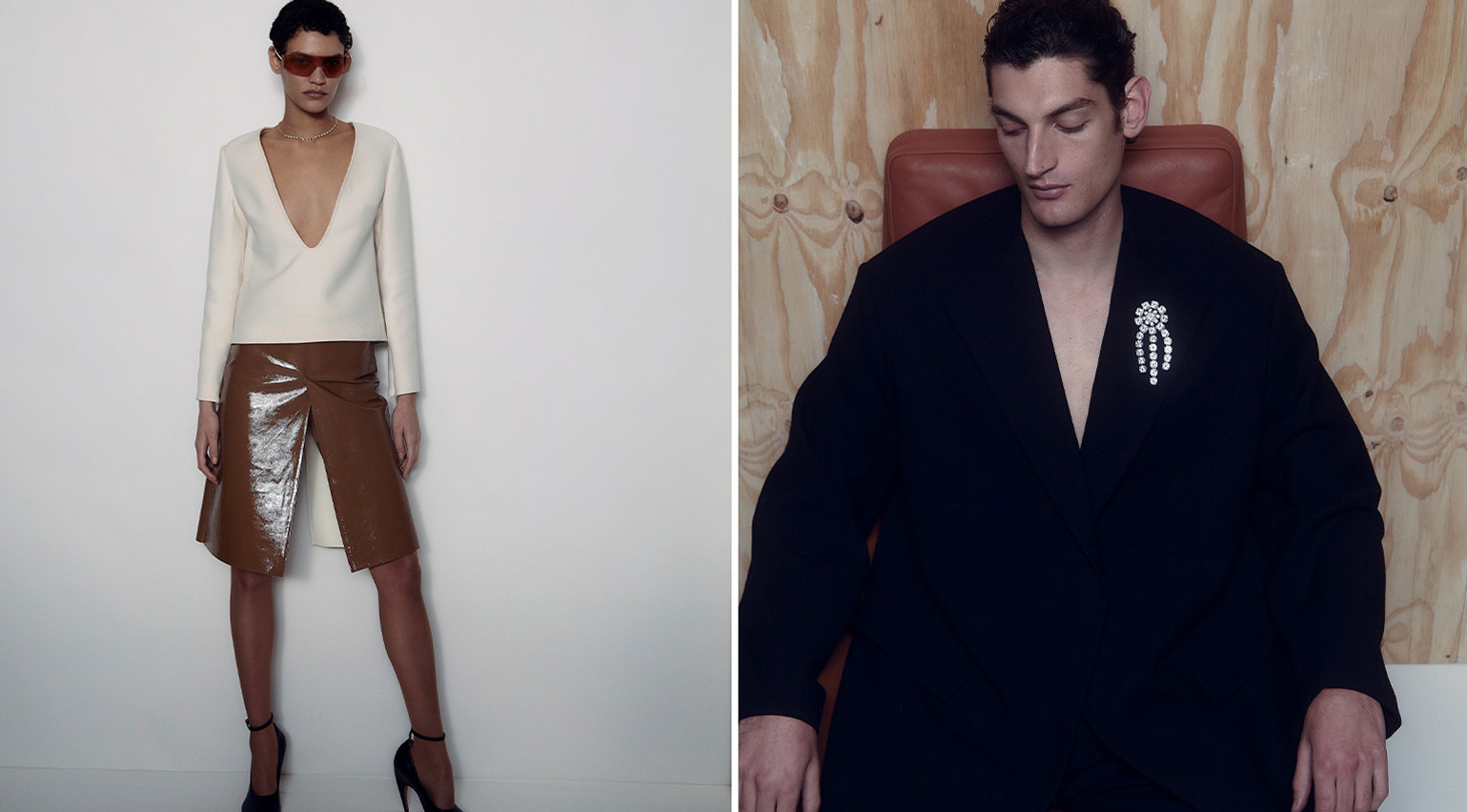 Best in shows: Wallpaper* picks S/S 2024’s standout looks
Best in shows: Wallpaper* picks S/S 2024’s standout looksAs part of Wallpaper’s Design Awards 2024 issue, we select the winning S/S 2024 runway collections – and their defining looks – at the start of a new season in style
-
 ‘A reflection of joy’: Francesco Risso on Marni’s new collaboration with Uniqlo
‘A reflection of joy’: Francesco Risso on Marni’s new collaboration with UniqloThe second collaboration between Marni creative director Francesco Risso and Uniqlo promises an uplifting take on Uniqlo staples. Here, Risso tells Wallpaper* the story behind the collection
-
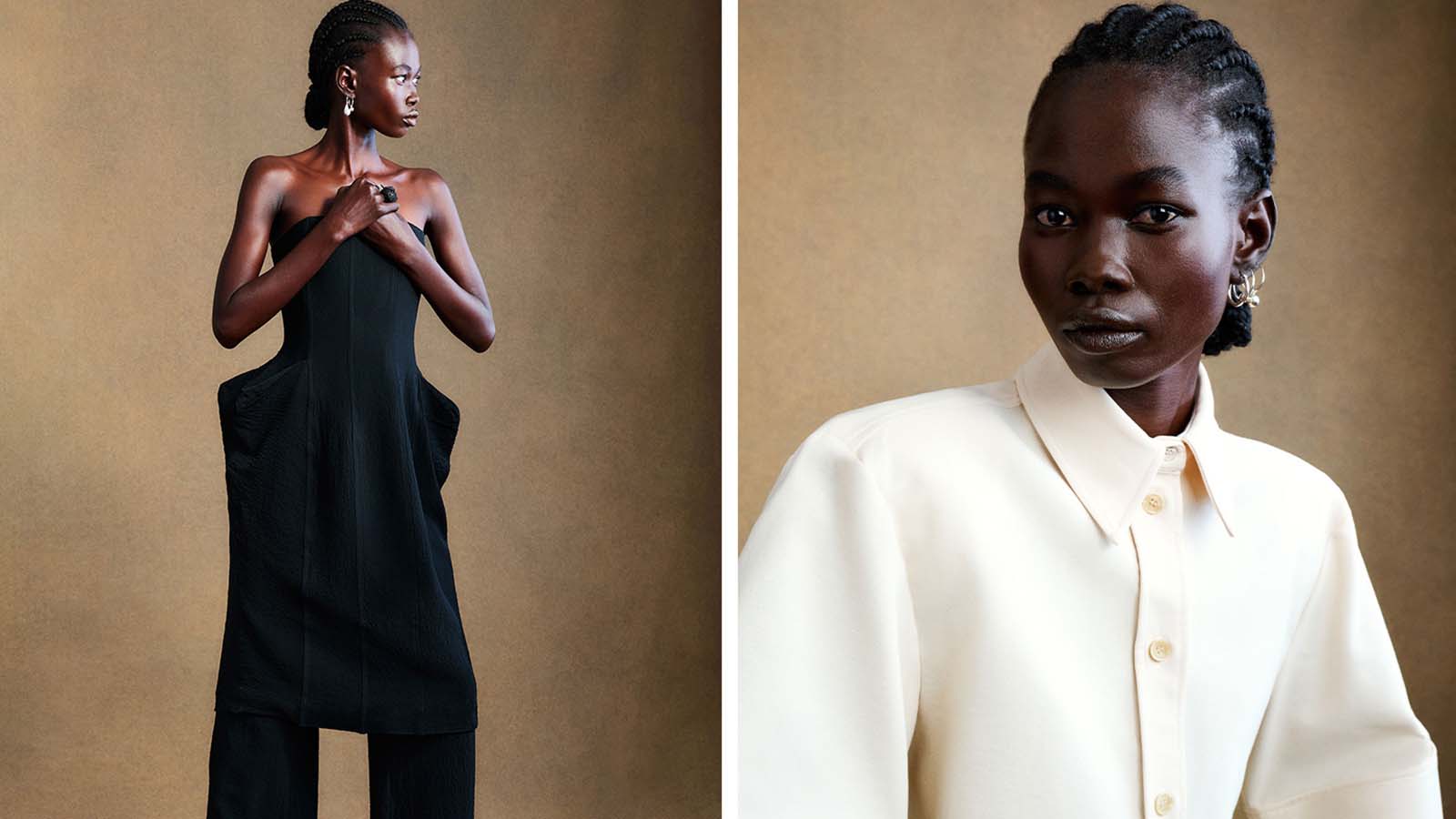 BITE Studios: ‘We want to have a brand which makes an impact’
BITE Studios: ‘We want to have a brand which makes an impact’BITE Studios is marrying sustainable textiles – from seaweed fabric to pea silk – with designs by a team including alumni of Proenza Schouler and Acne Studios
-
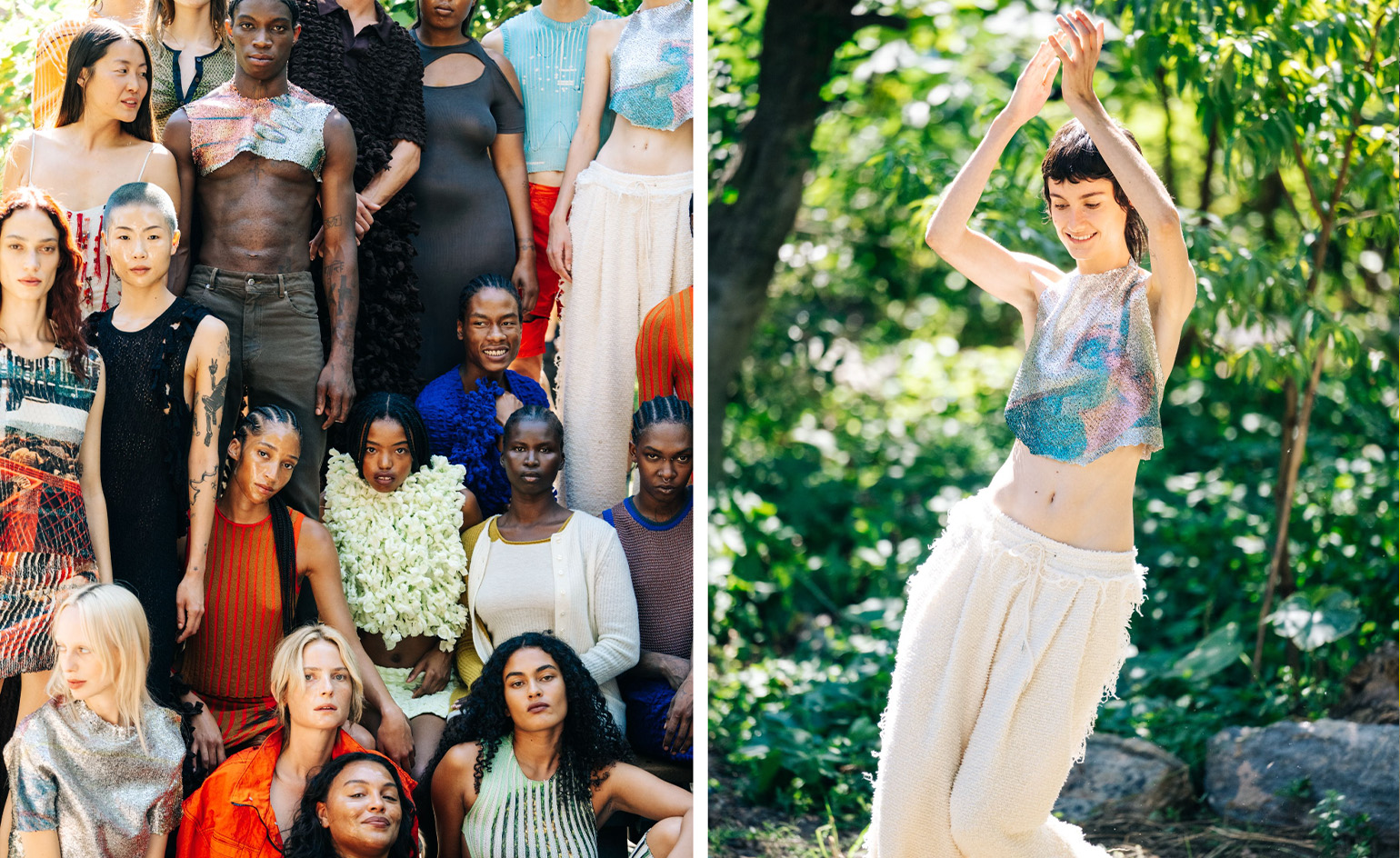 New York Fashion Week S/S 2023: Proenza Schouler to Tom Ford
New York Fashion Week S/S 2023: Proenza Schouler to Tom FordFrom a raft of homegrown talent to star-studded international imports, Wallpaper* presents the highlights of New York Fashion Week S/S 2023, reported by our editors in the city
-
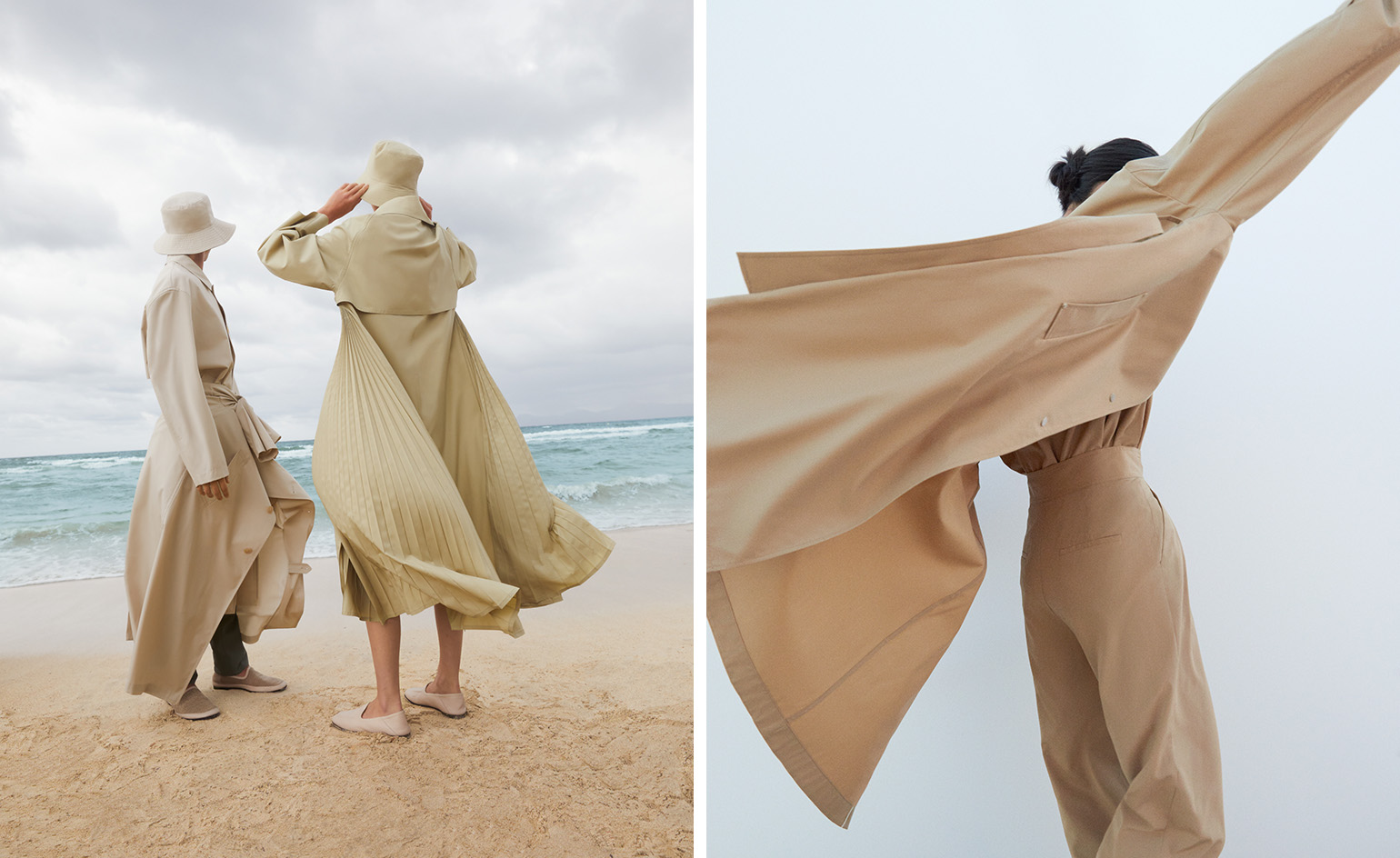 Icicle, the cross-continental label championing sustainability for 25 years
Icicle, the cross-continental label championing sustainability for 25 yearsOn the arrival of a new collection, ‘Hemp Up’, womenswear artistic director Bénédicte Laloux tells Wallpaper* the story behind minimally minded fashion label Icicle
-
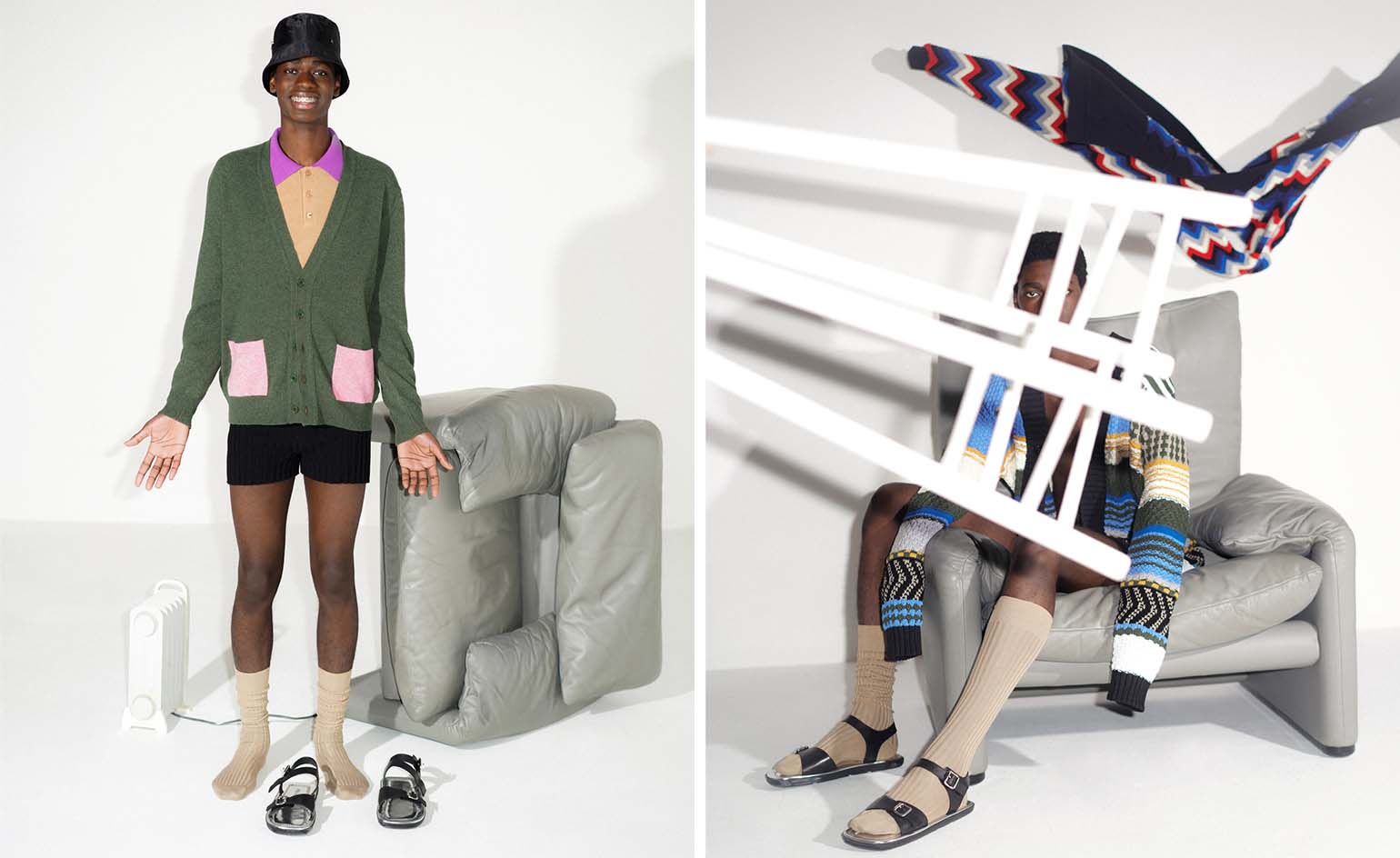 Colourful men’s cardigans to brighten your spring wardrobe
Colourful men’s cardigans to brighten your spring wardrobeFrom Missoni to Jil Sander, add a welcome jolt of colour to the season ahead with our edit of crafty, kaleidoscopic cardigans